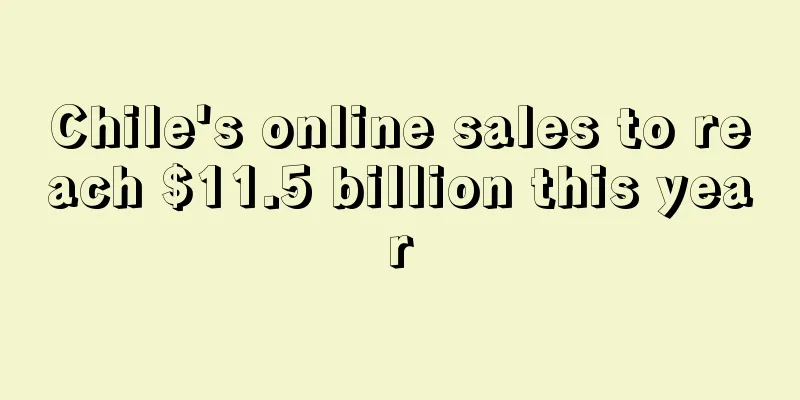European small and medium-sized online businesses are developing strongly, with 92% achieving sales growth!

|
Despite the impact of the epidemic this year, many online businesses have also gained opportunities for development. Email marketing company Sendlane conducted a survey of 150 small and medium-sized companies in Europe with sales of less than 44 million euros. The purpose is to understand the market development of European e-commerce under the epidemic. According to the analysis of the report, it also has certain reference value for sellers' marketing deployment next year.
According to the survey results, 92% of the 150 companies have seen an increase in sales. 21% of the companies have seen a sales increase of at least 40%; 34% of the companies have seen a sales increase of 10% to 20%. Regarding future forecasts, 93% of the companies expect sales to continue to grow, and 28% of the companies expect an increase of around 40%.
In addition to the growth in sales, profit margins have also risen. 90% of the companies surveyed have seen their overall profit margins increase by 10% or more. And most companies expect this upward trend to continue. 92% of the companies surveyed believe that their profit margins will continue to grow in the future.
As consumers' shopping habits change, they have developed the habit of shopping on e-commerce websites regularly, and promotions are no longer the main factor driving consumers to shop. In addition, with the increase in sales and profits, the traffic of enterprises is also guaranteed. 90% of the surveyed companies have seen a 10% or more increase in website traffic, which is in a steady upward trend.
The increase in consumer online demand has also increased the requirements of online businesses for technological tools. 85% of retailers and businesses will spend more on e-commerce technology in 2021 than in 2020, and 46% of companies will spend at least 40% or more than the previous year.
Of course, these small and medium-sized enterprises will also face other challenges in their development. Among them, online fraud is the biggest headache for enterprises. 35% of the surveyed enterprises said they had suffered from online fraud; secondly, 18% of the enterprises said that the financial status of consumers also hindered their consumption; transportation delays and network stability issues accounted for 13% and 8% respectively.
In addition, consumers’ fatigue with marketing strategies has also caused businesses to encounter a “bottleneck” in their publicity . At least 67% of businesses believe that consumers are experiencing marketing information fatigue; 21% of businesses said they should find new ways to attract customers; and 23% of respondents believed that they should change their marketing channels. However, marketing information output will still be the key marketing direction for businesses next year, with 89.3% of companies saying they will increase marketing information output in 2022.
Regarding the future expectations of the e-commerce market, 53% of respondents believe that the momentum of e-commerce development remains "strong", and 39% believe it is "very strong". Jimmy Kim, CEO of Sendlan e , said that despite the existence of economic, transportation, online fraud and other issues, e-retailers are still in a favorable position in 2022. Europe Small and Medium Enterprises |
Recommend
There are big changes at Amazon’s front desk again!
Before Prime Day, undercurrents began to surge on...
With over one billion views, kimchi sandwich is all the rage on TikTok!
Pickled cucumbers are a common pickled food in th...
What is Tonal? Tonal Review, Features
Founded in 2015, Tonal is an American smart home ...
Orders have dropped by half, are Americans going to have another holiday?
Entering July, the second half of the year is her...
What is PayWave? PayWave Review, Features
PayWave Visa payWave is a new feature for Visa chi...
Amazon's fourth-quarter net profit plummeted 98%! More than 100,000 employees have left
After experiencing wild growth during the epidemi...
Otto leads the German online furniture market with annual sales of 1.5 billion euros
When it comes to buying furniture and home applia...
Shopping app usage hits new high, 54% of e-commerce sales come from mobile devices
With the popularization of smart phones and the i...
Foreign media predicts: Amazon Prime Day sales growth may be less than 20%
Amazon Prime Day is coming, but the atmosphere of...
During the 618 shopping festival, Cainiao International Express continued to optimize logistics timeliness, and the stock of export-preferred warehouses increased by more than 400%.
On June 2, Cainiao International Express teamed u...
Russian retailer Detsky Mir's online sales increased 1.8 times in the first quarter
From January to the end of March this year, Detsk...
Shipment attention! Congestion in many European and American ports is increasing
In mid-August, cross-border e-commerce sellers be...
66% of customers choose products based on convenience, and online shopping may become the focus
The 2020 coronavirus pandemic has driven changes ...
Falling from the altar! Shenzhen's big seller lost more than 300 million yuan in a failed bet
Recently, many cross-border sellers have released...
Amazon made $10.6 billion in three months, but layoffs may continue
On February 1, US time , Amazon released its four...









